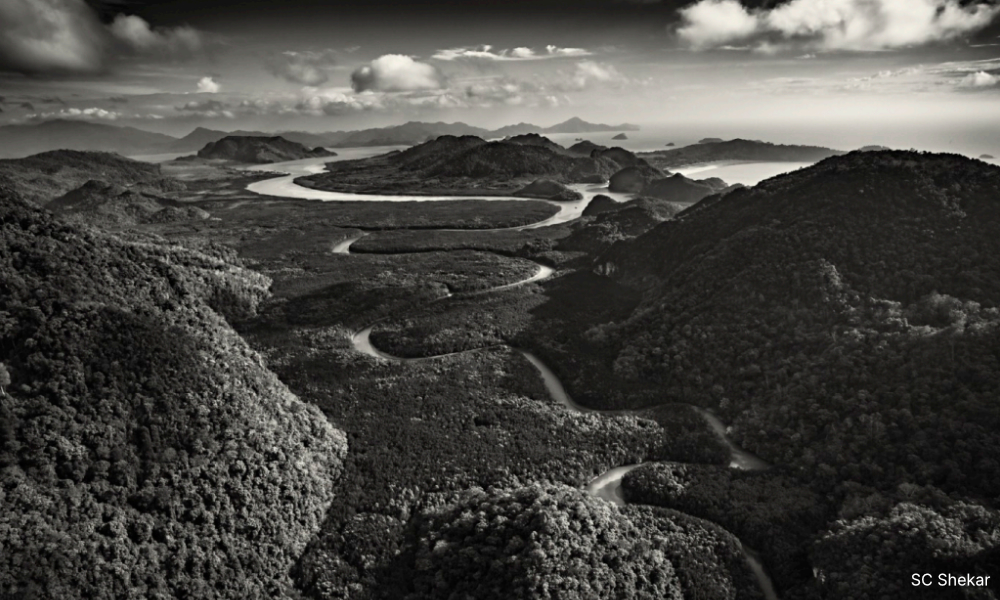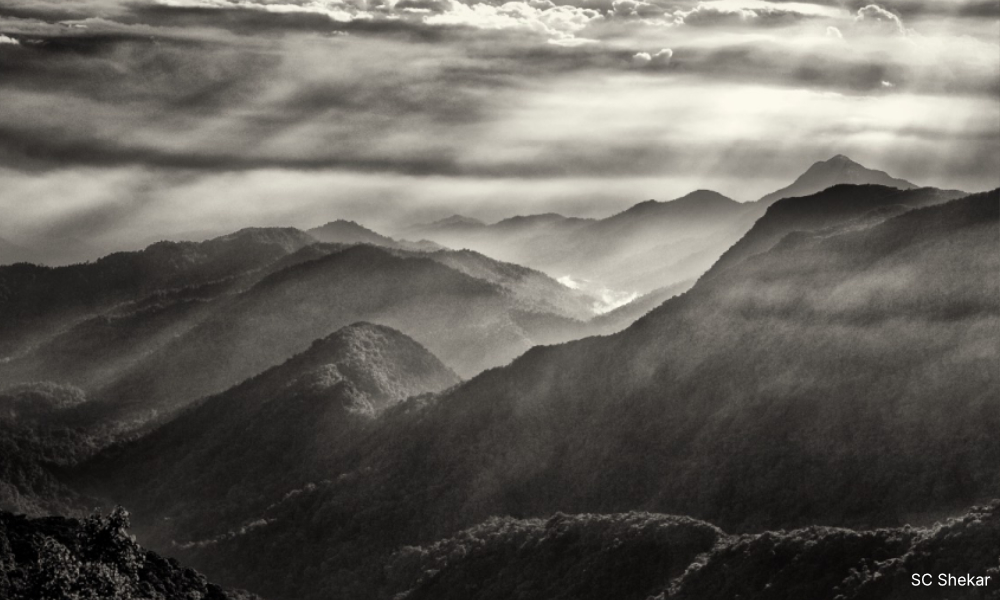REVIEW | SC Shekar’s “Sacred Currents” show at the Harta Gallery in Ampang Point captures the nation’s natural resource bounty, with a plea for officialdom to conserve it.
He believes we have a sacred duty to shepherd it for future generations. Clean rivers, abundant wildlife, lush forests, unpolluted air to breathe and safe food should be citizens’ collective trust.
Shekar said it is late, but not too late, to ring-fence what is perennially under threat. He wants environmental education in schools for children to become aware and for society at large to demand protection of our fragile ecology.
Coincidentally, over a dinner gathering in Kuala Lumpur last Friday, lawyer-poet Cecil Rajendra fumed over the sham pledges corporations and countries commit to global warming in circuses like the COP series.
COP - Conference of the Parties - refers to the United Nations climate change conferences. Cecil’s point was that guilty corporations and political enablers should be sued by citizens and stopped before they totally wreck the planet.
He urged the Malaysian Bar Council to support such citizen actions. Cecil also called out carbon trading as another fanciful distraction from the ongoing ecological disaster.
Large format impact
Shekar’s show, which runs until June 2, is a stunner. His majestic black and white images at 3 x 4 feet (0.91 x 1.23m) will stop you dead. The impact mesmerises, the effect is hypnotic.
Photo formats restricted to 16 x 20 (40.6 x 50.8cm), or 20 x 24 (50.8 x 60.9cm) inches seem like postage stamps stuck on walls of large galleries. Shekar dumps that limitation without apologies. He redefines an entirely new benchmark for superb black-and-white photography to dominate with power.

Shekar’s large-format, premium ink-jet prints stand bold and sassy at “Sacred Currents”. They command attention.
This pivot should free photographers, galleries and collectors from the tyranny of small sizes and pointless low-impact images. In the first week, 25 prints were sold. Another 25 orders are expected by the close of the show.
Captivated by the 30 grand images, I read the photographer’s notes on our mountain ranges and rivers, coastal mangrove forests, displaced forest people, marine and wildlife ecosystems wrecked by toxic chemical seepage from oil palm plantations, and land grabs for logging and urban expansion.
The photographer knows his subject intimately. More than that, he treks through mangroves, boats up rivers, engages with forest dwellers, bears witness to ruinous industrial agriculture and presents aerial vistas of our precious inheritance to protect urgently.
Two senior photographers who charted the country earlier, are Eric Peris and Alan Ng. The National Art Gallery hosts a year-long exhibition of Peris’ works, which ends in May. Ng is the master darkroom wizard sought by fussy camerapersons for prints to match originals.

Both these venerable elders lead the Pastoral Malaysia Collective of 12, in the upcoming “Soul of the Land” show, scheduled end-July, at Bank Negara Malaysia’s Sasana Kijang - the first time the gallery will showcase photography.
Shekar’s homage to mountains, coastlines, rivers and forests from above the clouds are rare perspectives that arrest the majesty of geological formations from 550 million years ago. The Himalayas, by comparison, are merely 55 million years of a geological blip.
Shekar’s architectural work taught him aerial camera handling in shaky small planes and helicopters. He documented the Twin Towers (1980), the Glass Pyramid, the Louvre, Paris (1990) and the Miho Museum, Kyoto (2017).
Commissions from architectural photography fund his environmental and socio-ethnographic documentation.
Photography with purpose
“Photography is accessible to anyone,” Shekar said, but “it should be harnessed to purpose, to be meaningful.”

Details of photographic paper or the thickness of the glass - a solemn ritual of exhibition photographers - are absent in his captions.
To him, those matters are irrelevant, trivial, and of zilch value to his larger purpose and narrative. Unless photography transcends such trite fixations, Shekar said, it will remain an amusing toy, nothing more.
The camera is a tool to capture life. The photographer has to breathe meaning into it by addressing the problems of society. He is testy with queries about cameras, lenses and accessories.
Shekar reflects on Eugene Smith, the post-WWII photographer for LIFE Magazine, who set the standard for photo essays, with empathy and social conscience. Smith exposed mercury poisoning in the Minamata prefecture, Japan, caused by industrial wastewater pumped from a chemical factory for 36 years.
That spread neurological palsy and damned the unborn of the community. It was Japanese silence in the face of tragedy, shame of the handicapped, denial of voice to victims, corporate bullying and governmental obfuscation that prolonged inaction.

What sets Shekar apart is his mastery of the visual medium, with fluent articulation of his commitment to the environment and our collective responsibility for it.
Widespread education is vital for the community to understand the existential threats to our survival as a species. Shekar plans photographic storytelling sessions for schoolchildren and teachers. - Mkini
Cyril Pereira, former publisher of Asia Magazine and operations director of the South China Morning Post, edits data journalism for China Daily in Hong Kong.
The views expressed here are those of the author/contributor and do not necessarily represent the views of MMKtT.




No comments:
Post a Comment
Note: Only a member of this blog may post a comment.